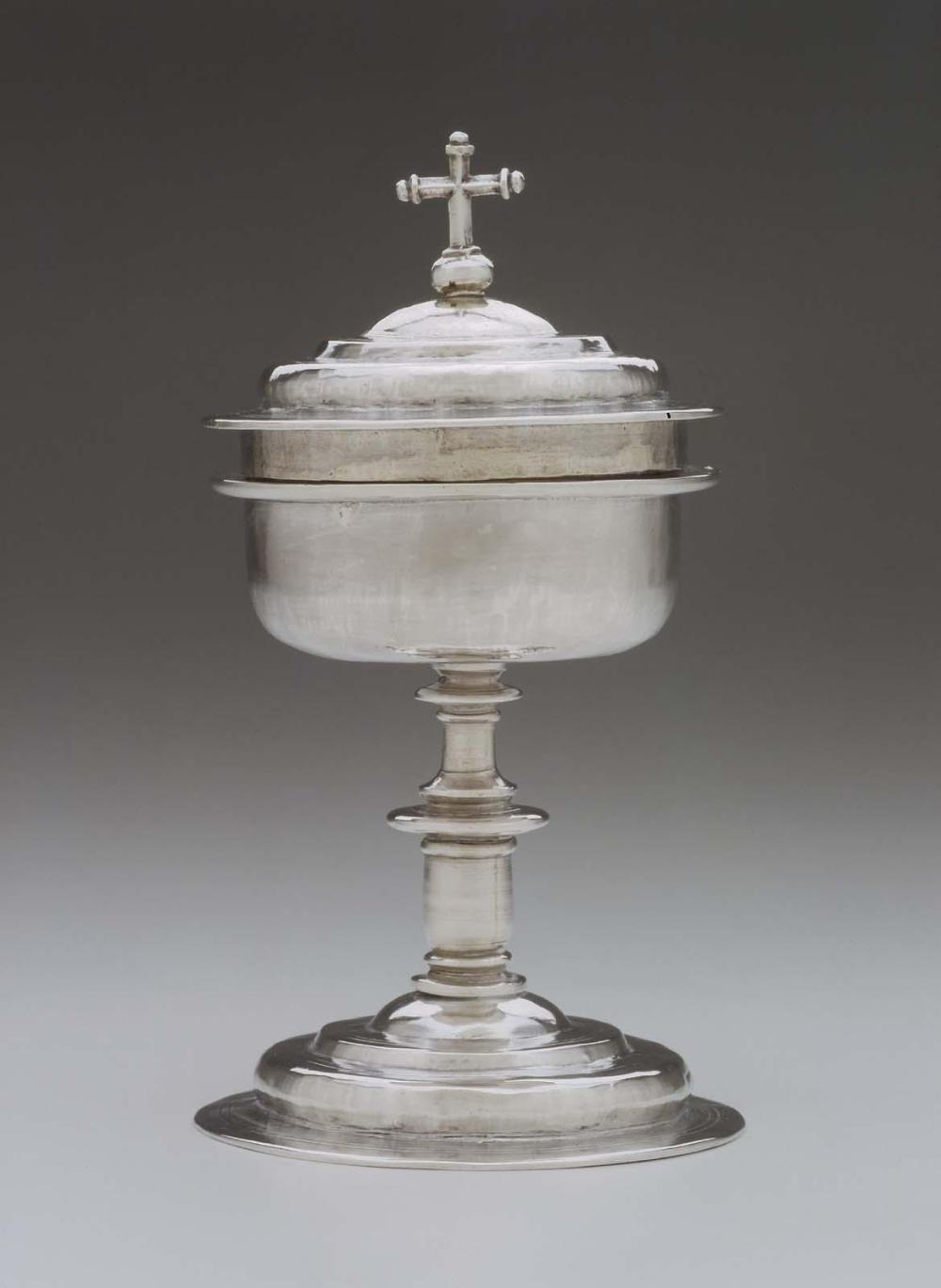Advanced Search 

Ciborium (copón)
Spanish Colonial
1650–1700
Object Place: Viceregal Peru
Medium/Technique
Silver with interior gold wash
Dimensions
19.1 x 10.2 x 9.3 cm (7 1/2 x 4 x 3 11/16 in.)
Credit Line
Gift of Miss Ellen Graves, Mrs. Samuel Cabot and Mrs. Roger Ernst in memory of their father and mother, Mr. and Mrs. Edmund P. Graves
Accession Number41.373a-b
ClassificationsSilver hollowware
In the Roman Catholic religion, the ciborium is used to store the consecrated Host, which is mystically transformed into the body of Christ during the celebration of Mass. The interior gilding on this example is in keeping with church tradition that only the most noble metal could hold the body and blood of Christ. The simple form is typical of those produced in viceregal Peru during the eighteenth century. The horizontal emphasis of its decorative elements can be found in both ecclesiastical and secular forms.
This text has been adapted from "Silver of the Americas, 1600-2000," edited by Jeannine Falino and Gerald W.R. Ward, published in 2008 by the MFA. Complete references can be found in that publication.
This text has been adapted from "Silver of the Americas, 1600-2000," edited by Jeannine Falino and Gerald W.R. Ward, published in 2008 by the MFA. Complete references can be found in that publication.
DescriptionThe raised vessel, with a low lid, is notable for its horizontal design elements. The flat-bottomed bowl is decorated with an applied projecting molding that is set beneath a lid, which has a similar rim. Three narrow knops define the baluster stem, which rises above a stepped base that splays outward. The stepped and scored lid with flange echoes the design of the circular base and is surmounted by a cast cross atop a small sphere. The interiors of the lid and the bowl have been gilded.
Marks
None.
InscriptionsNone.
ProvenanceCollected in Buenos Aires, Argentina, by Mr. and Mrs. Edmund P. Graves between 1898 and 1913; 1941, gift to the museum from Miss Ellen Graves, Mrs. Samuel Cabot, and Mrs. Roger Ernst in memory of their father and mother, Mr. and Mrs. Edmund P. Graves.
